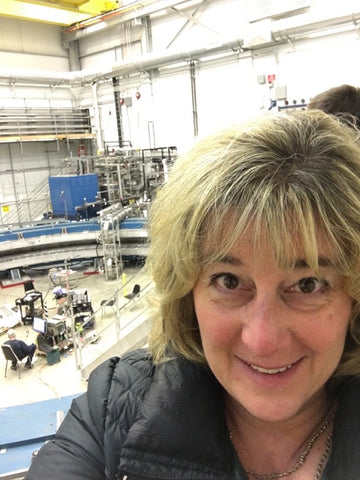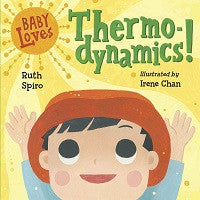We asked author Ruth Spiro the not-so-simple question: What inspired you to write STEM books for babies?
Since the first two titles in the
Baby Loves Science series came out in October 2016, this is the question I’m asked most often. Fortunately, it’s also the easiest to answer!
Back in 2010
The New York Times ran the article "
Picture Books No Longer a Staple for Children." It attributed the drop in picture book sales to the choice some parents were making to bypass picture books for their very young children in favor of more “sophisticated” reading material. I was discussing the article with friends and wondered aloud, “What do these parents want, quantum physics for babies?”
The more I thought about it, the more I realized this was an idea with potential. But when it comes to writing books, inspiration is only the beginning. Here’s the story of how the Baby Loves Science series came together in three (not so) simple steps:
- Start with Science
It’s a good thing that I enjoy a challenge, because I spent nearly a year researching before I could even begin writing. I knew I needed to understand the science well enough to then explain it in very simple terms. From a long list of possible topics, I picked seven to really focus on with, you guessed it, more research. The topics I ultimately chose to write about were those I could relate to common childhood experiences or observations.
Because this step is so crucial to the success of the series, each book also gets a thorough once-over by an expert reviewer,
Dr. Fred Bortz, who verifies the science is accurate.
- Make It Accessible
I’d previously written picture books, but envisioned this project as a series of board books for babies and toddlers. Was this a realistic goal? Once again, I hit the books and spoke with professionals to learn all I could about early literacy and how babies acquire language, because I wanted my series to be age-appropriate.
Interestingly, it turns out the most effective way to make abstract ideas more accessible is to present them within the context of a story. Listening to a story activates the language processing center of a child’s brain and helps make the information more memorable. (This is true for adults, as well.) Taking it a step further, when the story is told from the point of view of a character the child can relate to, areas of the brain literally “light up” as if they are experiencing events right along with the character. How amazing is that?
So, while concept books have their place in baby’s first library, I’d need to take a different approach. I decided that the best way to structure my books was in the form of a story, told through an appealing main character, and related to a familiar real-world experience or observation. I was especially happy to discover that this scientifically supported structure just happened to align with my experience as a children’s book author!
- Make It Irresistible
As soon as Irene Chan signed on to illustrate, I knew these books would be adorable. The beautiful babies featured on the covers and throughout each book practically leap off the page, adding another layer of interest for even the littlest listeners.
You may have noticed that babies love to look at pictures of faces, and especially faces of other babies. It turns out there’s science behind that, as well. “Babies are hardwired to recognize faces, which helps them connect with their caregiver early on,” says Michael Frank, a brain and cognitive sciences researcher at MIT. So, even before a baby understands the meaning of the words in the text, they are practicing their focusing skills on the bright, colorful illustrations. It’s no wonder that parents report their babies are drawn to these books like little hummingbirds to nectar!
All humor aside, the Baby Loves Science books only appear to be simple in their writing and design. In reality, they’re the result of collaboration between an entire team that works very hard to ensure they are accurate, age-appropriate and irresistible to our young audience - because we believe they deserve nothing less.
We’re pleased to report FOUR new additions to the Baby Loves Science family will arrive in 2018! But since we all enjoy an element of surprise, we’ll be announcing the titles closer to their arrival!










No comments:
Post a Comment